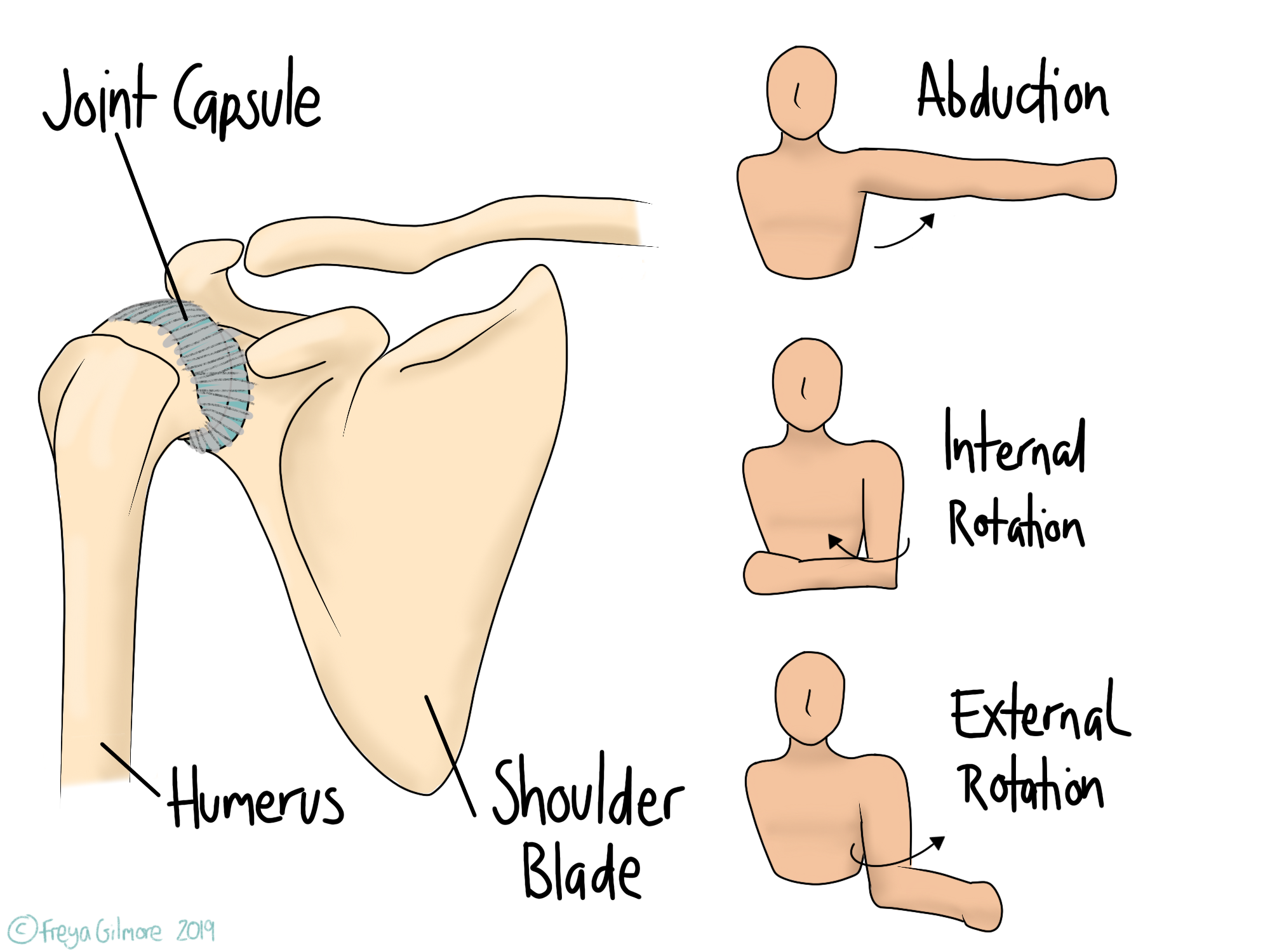Frozen Shoulder
A frozen shoulder is one specific condition- not all painful or stiff shoulders count.
Frozen Shoulder Basics
The shoulder is made of a number of joints, but the main one is the ball and socket. Around this joint there is a capsule. This is a fibrous piece of tissue that forms a seal around the joint, keeping fluid within. The formal name for frozen shoulder is adhesive capsulitis, which means "sticky, inflamed capsule". As the shoulder begins to freeze, it is the capsule that has become tight or "stuck".
Unfortunately, there is a lot we still don't know about how or why it happens. There are risk factors that make its development more likely, such as:
Diabetes (especially if poorly controlled)
Thyroid problems (both under- and over-active)
Recent history of immobilisation of the shoulder area, such as recovery from surgery or injury
History of frozen shoulder on the other side
However, there are still cases that come up where none of these risk factors are present. It is also more likely to develop in women than men, and in people over 40.
Signs & Symptoms
This is a slow condition to develop and recover from. We categorise it into three stages: freezing, frozen, and thawing. Each stage can last months, but may be sped up my manual therapy and exercises. Pain and stiffness develop in the freezing stage. During the frozen stage, symptoms do not progress- pain may even begin to improve but the stiffness remains. All symptoms begin to clear up in the thawing stage. From start to finish, the whole process may take over a year.
The movements lost to frozen shoulder are illustrated above: abduction, internal rotation, and external rotation. This means things like putting on a coat or reaching into the back seat of the car can become very difficult. When your osteopath examines you, they will see if you have any more movement when they do the action for you. In frozen shoulder, the movement will be no better when you are relaxed.
Management
Your GP may suggest or prescribe painkillers to help you manage your symptoms. Sometimes you may be referred for an injection, either with steroids or painkillers. Less frequently, you may be referred for surgery to try and loosen the capsule. The NHS recommends more conservative treatments, like manual therapy, before moving on to injections or surgery.
Your osteopath will work into the shoulder and surrounding area. Along with the immediate problem of the joint capsule, there is often tightness around the shoulder blade. This can track into the back and neck, potentially causing headaches too. Although the frozen shoulder itself will take a long time to resolve, we may be able to speed it up, and can at least give you some more comfort in the rest of the shoulder and upper body.
Preventing Frozen Shoulder
If you have a shoulder injury, and especially if you have any of the risk factors, make sure you get proper rehabilitation. Your osteopath can help you with this. We will work on moving the shoulder as much as is appropriate. We can also help with rehabilitation after shoulder surgery, including shoulder joint replacements. You might be surprised by how much movement you have after this kind of surgery, but sometimes it takes some physical therapy to be able to trust your new shoulder.
If you have the symptoms of frozen shoulder, or need help with an immobile shoulder, you can book an appointment with us here.

